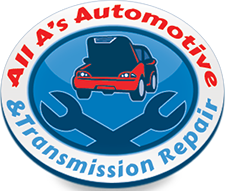Using The Correct Auto Coolant Type: Facts & Tips

 Spring is the perfect time to have your vehicle’s fluids checked. Driving in high summer temperatures can take a toll on your vehicle’s coolant system. Check your owner’s manual to find the auto coolant type recommended for your car. Then, discuss the benefits of a coolant fill or radiator flush with your mechanic to determine when to schedule your service.
Spring is the perfect time to have your vehicle’s fluids checked. Driving in high summer temperatures can take a toll on your vehicle’s coolant system. Check your owner’s manual to find the auto coolant type recommended for your car. Then, discuss the benefits of a coolant fill or radiator flush with your mechanic to determine when to schedule your service.
How Does Auto Coolant Work?
Auto coolant is the protective fluid in your vehicle’s cooling system, regardless of type. Its primary purpose is twofold: to increase the coolant’s boiling point in the engine when it’s hot outside and decrease the coolant’s freezing point when it’s cold outside. Its secondary purpose is just as essential. Auto coolant contains additives that prevent rust, corrosion, and excessive wear on the internal components within the engine and cooling system.
Auto Coolant Type
In the past, you could easily identify coolant (or antifreeze) by the bright yellow-green color. However, many different coolant types and colors are available for modern vehicles. Some types are for specific kinds of automobiles, and some are for a particular automotive brand. Always check your owner’s manual for the recommended coolant type for your car. If your car needs more, do not depend on the color alone. Read the labels since coolant colors are not universally regulated. It is important never to mix different coolants.
IAT (Inorganic Additive Technology – Low Silicates)
Most of us know this coolant type is the OG or original coolant. This neon-yellow-green coolant was used in almost every vehicle on the road for decades. New automobiles rarely use this coolant since the additives degrade quickly and require servicing or replacement every 2 years or 24,000 miles.
OAT (Organic Acid Technology – Nitrite Free)
GM, Saab, and VW vehicles commonly use OAT coolants. Depending on the manufacturer, they are usually dyed orange but can also be yellow, red, or purple. OAT-type coolants are NOT compatible with other types. Autos using OAT coolant should schedule service every 5 years or 50,000 miles.
HOAT (Hybrid OAT Phosphate Free)
European vehicles such as BMW, Volvo, Mini, and Tesla use this hybrid coolant type. It is colored turquoise. Read your owner’s manual for the manufacturer’s suggested service intervals if you own one of these vehicles.
HOAT (Hybrid OAT – Low Silicates/Nitrate Free)
Chrysler, Ford, and some European models use this hybrid coolant, usually colored yellow or orange. Service intervals for these vehicles can range between 2 and 10 years or 25,000 and 100,000 miles.
P- HOAT (Phosphate HOAT)
Asian vehicles like Honda, Hyundai, KIA, Nissan, and Toyota use this hybrid coolant. This coolant type can be colored pink or blue, depending on the brand. Read your owner’s manual for the manufacturer’s recommended service intervals.
Si-OAT (Silicated HOAT)
High-performance vehicles, including Audi, Mercedes Benz, Porsche, and VW, use this coolant type. It is often colored purple. Check your owner’s manual for the manufacturer’s suggested service intervals.
Risks of Mixing Auto Coolant Type
Is it hazardous to mix different types of coolant? Yes, the risks are real. Using the incorrect coolant in your cooling system can create numerous issues and damage to the cooling system:
- Mixed coolant types can thicken, turn to gel, and cease moving through the vehicle’s cooling system.
- The engine and cooling system components can overheat and fail.
- Rust, scale, and corrosion can quickly develop and cause blockages.
- Due to a lack of lubrication and high heat levels, rubber fittings, hoses, and gaskets may crack and leak.
Don’t drive if you suspect your car’s coolant is incorrect. Contact your service technician, explain the issue, and schedule a radiator flush.
Public Safety Notice Regarding Toxicity
It is also crucial to know that all coolant and antifreeze fluids are toxic if ingested or inhaled. Practice safety precautions every time you top off or replace the coolant in your vehicle.
- Promptly clean up spills and leaks.
- Follow the instructions on the original coolant container for proper disposal or recycling methods.
- Never store coolant in another receptacle.
- Always keep coolant out of the reach of children and pets drawn to the sweet taste and bright colors.
Coolant Fill vs. Radiator Flush Benefits
Most auto manufacturers suggest two coolant services: a coolant fill and a radiator flush. Let’s review the differences.
- Coolant fill: A technician drains the old fluid from the cooling system using gravity and refills it with fresh coolant.
- Radiator flush: A technician drains the old fluid from the cooling system. Then, they mix a cleaning solution with clean water and push it through the system under high pressure, removing old coolant and particulates. Finally, they add fresh auto coolant to the cleaned system.
Benefits of a radiator flush:
- The cooling system is free of all accumulated debris, rust, and scale deposits.
- New auto coolant helps the engine run more efficiently.
- Fresh coolant helps the cooling system components last longer.
- New coolant properly lubricates the cooling system components and prevents premature wear.
Auto Fluid Maintenance in Midland, MI
Bring your vehicle into All A’s in Midland, MI, and our qualified technicians will check your auto coolant levels and discuss all your service interval needs.
Request a Service
To keep your vehicle running smoothly, call (989)631-4672 or visit us online to schedule your next Radiator Flush or Coolant fill service appointment with the correct coolant type.
Posted in: Cooling System
Leave a Comment (0) ↓
